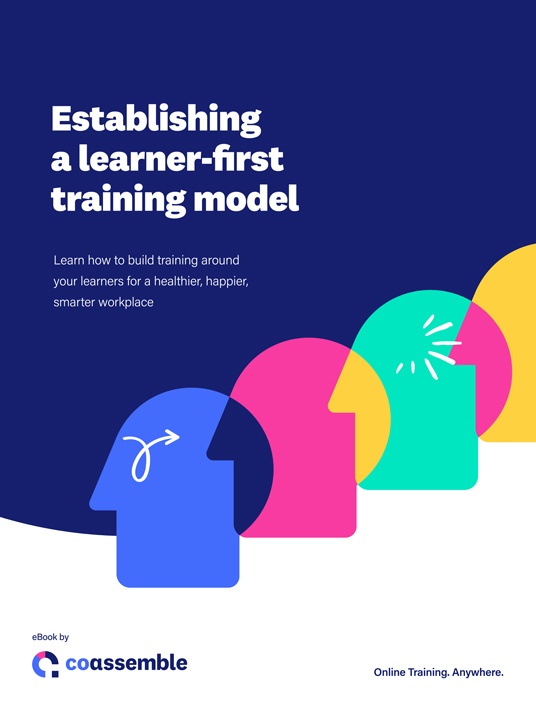The Power Of Online
Online training conducted via a Learning Management System (LMS) is becoming increasingly popular as it provides a digital training space that both learners and trainers can engage and interact with. An LMS has 2 main advantages:
- Trainers can create interactive content, deliver the materials to their learners and track their training all in one place.
- Learners are able to access training content anywhere, anytime.

3 Key Things To Remember When Moving Your Training Online
The biggest problem when undertaking online training is keeping engagement levels high. A study by Qualtrics found that 31% of trainers faced challenges when it comes to learner engagement levels [1].
A learner-first training model is being adopted by companies around the globe to increase the success of their online training. In short, this model is focused on the most important part of the learning strategy which is the learner.
When training is designed with the learner as the focus, trainers will see more engaged learners, better training results, and more efficient, happier workplaces.
Tip #1: Know Who You’re Training
This sounds like a silly thing at first, however, when starting to create any training, most trainers focus on choosing their tools first, rather than understanding their learners before building their training out.
A learner persona refers to the representation of a group of learners. Learner personas should contain demographic information (e.g. age, department, geographic location) and psychographic information (e.g. motivations for learning, preferred methods of learning) as this will allow you to understand the best methods to train and maximize engagement from your learners.
You may end up with several different personas in several training groups, the idea is not to develop different training for each of your individual learners (as realistically, most trainers just do not have the time), instead, you should identify the learning requirements per persona and create your training materials with the requirements in mind.
Tip #2: Integrate Different Materials And Tools
Now that you’ve understood your learners and your learning goals, it’s time to select your training tools and begin designing your online training program. Remember to keep the learner in mind during this stage.
When you’re selecting a tool, an LMS has many helpful features, however, these are not the only tools at your disposal. Some other examples include video, podcasts, predictive learning software, and even social media. Most tools can integrate into most LMSs to create a more powerful and well-rounded training experience.
When you’re designing content, there are 3 key principles to create learner-first training materials:
- Make It Interactive
This should be like a two-way street; the learner must be able to interact with both their learning content and with their training. - Challenge Your Learners
This refers to creating content that has depth, formative assessments, and gamification, in turn, leading to engaging and powerful content. - Sharing And Extension Opportunities
This refers to the learner being able to share their knowledge and content completion either via a certificate or results.
Tip #3: Evaluate Your Training
After you’ve completed your training, it’s important to evaluate your online program so that you can improve your future training. A great evaluation will allow you to clearly see where your training is successful and not so successful.
Training evaluation should not only be from the trainers but also the learners. Trainers should evaluate how if their learners have learned anything and applied that learning, which should be measured by quantitatively (e.g. results from pre- and post- assessment).
Learners should be able to gauge their understanding of the training content through their learning results, however, trainers should also provide feedback with their results so that students know how to improve for the future.
Conclusion
The learner-first training model is an effective way to create an online training program that is proven to provide a powerful and meaningful training experience as it focuses on the learners themselves.
However, there is some serious groundwork in successfully implementing this model as it aims to tailor content to your learners and requires evaluation and improvement regularly, but whoever said success was easy?
References:
[1] Qualtrics 2018









